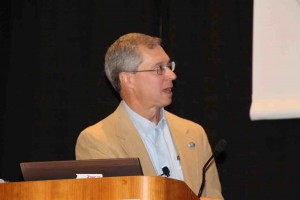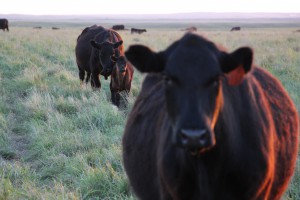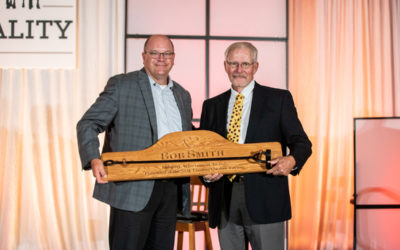No sick animals, ever
Sick animals are what let a veterinarian put food on the table, right? No animals to treat, no paycheck.
Well, that’s not the way Purdue University’s Dr. Mark Hilton sees it.
Rather than visit a ranch or a feedyard, I went on a trip of another kind (via video interview gathered earlier this year) and learned from one of the best.
 “I tell my freshman veterinary students their very first lecture, on introduction to the beef industry, my goal as a food animal veterinarian is to never see a sick animal,” he says.
“I tell my freshman veterinary students their very first lecture, on introduction to the beef industry, my goal as a food animal veterinarian is to never see a sick animal,” he says.
Enter the good doctor’s “dream team.”
As a veterinarian, he is on the roster, but also wants a nutritionist to help produce calves with the best rate of gain. A grazing specialist to promote pasture health. And even a marketing expert, because what good is value-added beef if your returns don’t exceed your input?
All of the above promote healthy and profitable calves from the very beginning.
“The nutrition of the dam when that calf’s in utero starts the clock,” Mark says. “So the placenta develops in the first few weeks of conception, and if the placenta doesn’t develop correctly because of poor nutrition of the dam, that calf is set up for the potential for health problems later on in his life.”
After a calf is born, through weaning, preconditioning and its first days in the feedlot, the veterinarian still stresses nutrition, nutrition, nutrition. Especially for those calves that have never been introduced to high-starch feedstuffs, such as corn silage.
“More cattle are ruined the first two weeks on feed in the feedlot than any other time of their life,” Mark says, quoting a friend in the business. “We know absolutely that subclinical acidosis decreases the immune system. And then that calf with the decreased immune system is the one that gets sick from bovine respiratory disease.”
There are other points to watch: calving environment, preconditioning and the importance of retaining ownership in a feedyard. All of which, put together and including the “dream team,” can help lower sickness rates in cattle, and that’s every producer’s dream.
Now if only I had a “dream team” following me around….
~Hannah
 Although summer intern Hannah Johlman was born in northeast Kansas and is now a senior studying ag communications and animal sciences at Kansas State University, she claims Sheridan, Wyo., as her home. Hannah tributes her grandfather and uncle involved in farming and veterinary medicine as her largest ag influencers, inspiring her to the career path she has chosen.
Although summer intern Hannah Johlman was born in northeast Kansas and is now a senior studying ag communications and animal sciences at Kansas State University, she claims Sheridan, Wyo., as her home. Hannah tributes her grandfather and uncle involved in farming and veterinary medicine as her largest ag influencers, inspiring her to the career path she has chosen.
You may also like
Smith receives Industry Achievement Award at Feeding Quality Forum
The hands of a veterinarian hold the life cycle of an animal in their care. The mind, however, directs the hands. Anyone who’s met Dr. Bob Smith knows the way he thinks is something else. It’s come from more than 30 years in the industry caring for its people and cattle. It’s why he earned the 2021 Industry Achievement Award.
Of cattle care and human flourishing
Dr. Bob Smith, or “Doc Bob,” is the kind of man that looks to others’ success before his own. One that endeavors to be a life-long learner and shares that knowledge with anyone it’ll help. He’s also our 2021 Industry Achievement Award recipient.
Natural Choice to a Prime heritage
“Change is inevitable, success is optional,” David Rutan says. That positive philosophy applied to everything from good morning to great cattle only begins to tell why Morgan Ranches earned the 2020 Certified Angus Beef Commercial Commitment to Excellence award.



